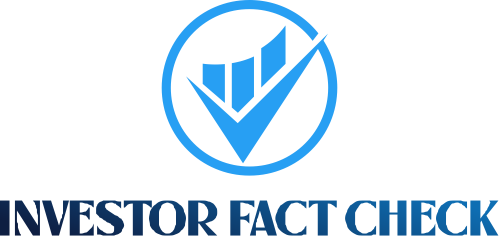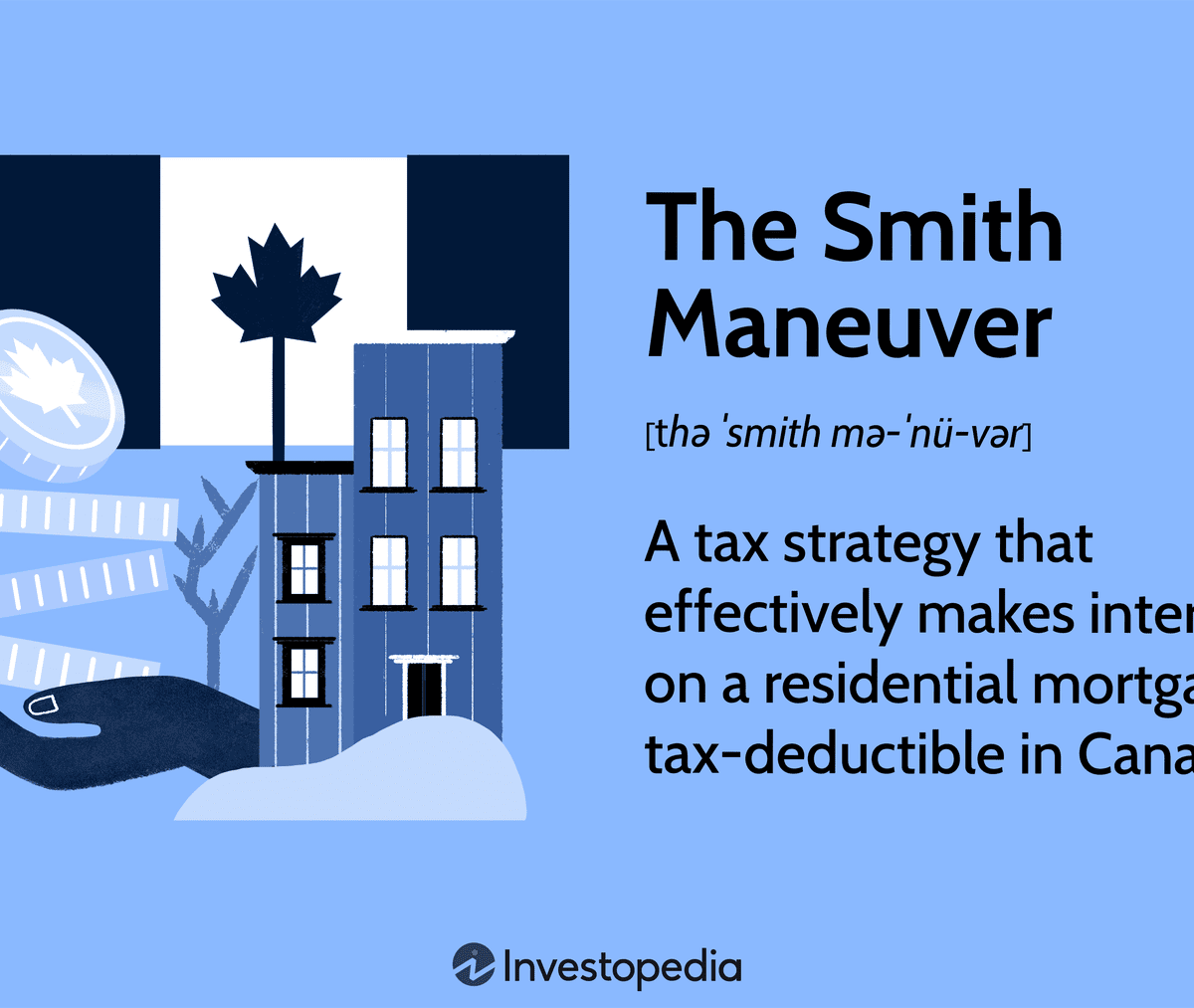What Is the Smith Maneuver?
The Smith Maneuver is a legal Canadian tax strategy developed by financial planner Fraser Smith that converts mortgage interest into tax-deductible investment loan interest. It typically requires a readvanceable mortgage to work effectively.
By using this strategy, homeowners can make their mortgage interest tax-deductible, potentially accelerate mortgage repayment, and build net worth over time. While the Smith Maneuver offers these advantages, it can be complex and often benefits from professional financial guidance.
Key Takeaways
- The Smith Maneuver is a financial strategy designed in Canada to make mortgage interest tax-deductible by converting it into investment loan interest, potentially leading to significant tax savings and faster mortgage repayment.
- To implement the Smith Maneuver, homeowners must have a readvanceable mortgage that combines a traditional mortgage and a home equity line of credit (HELOC).
- The strategy involves using the HELOC to reinvest the principal portion of monthly mortgage repayments into income-generating investments, thus creating opportunities for compound growth and enhanced tax deductions.
- Several accelerators, such as the Debt Swap and Cash Flow Dam, can be used to enhance the benefits of the Smith Maneuver, potentially increasing the speed of debt conversion and tax deduction accumulation.
- Despite its advantages, the Smith Maneuver carries risks, including interest rate fluctuations and market volatility, and requires careful consideration and consultation with financial professionals to avoid potential downsides.
Delving into the Smith Maneuver Strategy
Fraser Smith, a financial planner based in Vancouver Island, Canada, developed the Smith Maneuver in the 1980s and popularized it in a book by the same name, published in 2002.
Smith refers to this maneuver as a debt conversion strategy, rather than a leveraging tactic, on the basis that it does not involve acquiring any incremental debt and can potentially lead to tax refunds, faster mortgage repayment, and a larger retirement portfolio.
In Canada, even though interest on a mortgage is not tax deductible, the interest paid on loans for investments is tax deductible. (It’s important to note that this does not extend to loans taken for investments made in registered plans, such as Registered Retirement Savings Plans (RRSPs), and other tax-free accounts, because they are already tax-advantaged.)
For the Smith Maneuver, a borrower needs to obtain a readvanceable mortgage, which is slightly different from a conventional mortgage. A readvanceable mortgage consists of a mortgage and a line of credit called a HELOC (a home equity line of credit) bundled together. A HELOC allows you to borrow up to a certain percentage of the value of your home.
Once this is accomplished, the homeowner can transform mortgage loan interest into tax-deductible investment loan interest.
Important
In Canada, borrowing to purchase a primary residence is not considered tax-deductible borrowing because there is no reasonable expectation of generating income from the home in which one lives.
How to Implement the Smith Maneuver
Each month, borrowers repay their mortgage principal and simultaneously re-borrow that amount using the line of credit to invest in qualifying investments.
- The net debt for this borrower remains the same because, for every dollar of the mortgage principal that is repaid to the lender, another dollar is borrowed under the line of credit.
- The line of credit funds are invested at a higher return rate than the interest rate on the credit. The interest payments on the line of credit in this situation are tax deductible.
- Therefore, if the stated borrowing rate is 6%, and if the taxpayer is at the 40% marginal tax rate, the real rate of interest is only 3.6% (interest rate*[1-MTR]). If the strategy is executed properly, it should theoretically result in a tax refund when the borrower files their income taxes in Canada.
- Finally, the borrower can use their tax refund to pay down their mortgage, and then access the resultant available credit to invest.
Self-employed Canadians, not taxed at source, can calculate the tax relief provided by the strategy.
Apart from the contributions to the investment portfolio that are increasing the amount invested on a monthly basis, and the investment from the application of the tax relief, the amortization of the non-deductible mortgage is reduced due to the annual mortgage prepayments.
Utilizing Existing Resources With the Smith Maneuver
The Smith Maneuver does not require any additional (out-of-pocket) funds from the homeowner on a monthly basis and therefore does not cause a reduction in their standard of living.
Strategies requiring extra funds, like boosting investment contributions or speeding up mortgage debt repayment, can impact quality of life.
The Smith Maneuver simply enables the homeowner to put their existing monthly mortgage payment to work more than once. Instead of the mortgage payment only going to service mortgage interest and reduce the amount of non-deductible debt owed against the house, the strategy also reduces the homeowner’s tax bill and allows them to increase the value of their investment portfolio.
Leveraging HELOC for Investment Opportunities
Upon refinancing into the appropriate mortgage, the homeowner may have immediate access to available credit. Some or all of this credit can be used to invest in a qualifying investment to start taking advantage of compound growth and quickly generate significant tax deductions.
Bear in mind that this means additional leverage. Your total debt will increase above and beyond the original mortgage debt and should be carefully considered in consultation with financial professionals.
This Smith Maneuver process describes the strategy in its simplest form. Accelerators (discussed below) can speed up the earning of tax deductions, the elimination of non-deductible mortgage debt, and the accrual of investment assets.
Fast Fact
The Smith Maneuver’s main idea is to invest as much and as often as possible to leverage compound growth. This runs counter to the idea of letting the equity in one’s home increase over time as it is eroded by inflation, not earning a return, and foregoes the benefits of compound growth and tax deductions.
Enhancing the Smith Maneuver With Accelerators
Several accelerators, or tactics, are used with the Smith Maneuver. Some or all of them may be available to the homeowner. Each accelerator is discussed below.
The Debt Swap: A Strategic Accelerator
After looking at the effect of taxation on a redemption, the Debt Swap involves redeeming paid-up investment assets (mutual funds, stocks, etc.) to prepay the mortgage. Then you re-borrow the same amount, which then can be used to repurchase the identical investment (consider superficial loss rules) or a different investment. It can also be done with cash on hand.
No additional cash is required from the homeowner to use this accelerator. Therefore, there is no change in the homeowner’s total debt or invested amount. But the amortization of the non-deductible mortgage significantly decreases as tax relief increases.
Redirecting Cash Flow for Enhanced Deductions
The Cash Flow Diversion accelerator redirects funds that are consistently being invested, perhaps on a monthly basis, into mortgage prepayments. The same amount prepaid can then be re-borrowed to invest, thus increasing tax deductions and reducing the amortization. No additional cash is required.
Maximizing Dividend Reinvestment for Growth
The DRiP accelerator stops the automatic reinvestment of any dividends from existing investments. Instead, it uses them to prepay the mortgage. Then the identical amount is re-borrowed to buy either the same investment that provided the dividends or another investment.
No additional cash is required from the homeowner. Yet this will speed up tax relief and the reduction of amortization. There is no change in how the dividends are taxed, whether they are taken in cash or automatically reinvested.
Accelerated Tax Deductions With Cash Flow Dam
Typically, those who own a proprietorship in Canada (rental property or home-based business) will directly pay business expenses with business revenues.
The Cash Flow Dam accelerator involves first using proprietorship revenues to prepay their primary residence mortgage, then re-borrowing these funds to pay the business expenses.
No additional cash flow is required from the homeowner, and the generation of tax deductions is accelerated. Non-deductible mortgage debt is eliminated much more quickly than it otherwise would be, considering monthly proprietorship revenues can sometimes be significant.
Debunking Myths About the Smith Maneuver
Many financial professionals and financial journalists have described the Smith Maneuver as “selling assets to prepay your mortgage, then re-borrowing the same amount to invest again.” This is not the Smith Maneuver; it is the Debt Swap accelerator.
Another common misconception is that the investment portfolio growth rate must at least be equal to the rate paid on the line of credit in order to break even. But because the investment loan/line of credit is deductible, the real rate of interest paid is lower than the stated rate of interest.
It is also thought that your investment portfolio must generate enough income to service the interest on the deductible line of credit. However, the increasing efficiency of the regular mortgage payment is sufficient to service the increasing deductible interest expense on an ongoing basis.
The homeowner is neither required to pay out of pocket nor to withdraw income from the investment portfolio to make the interest payments.
Risks and Considerations of the Smith Maneuver
While it is not an overly complicated strategy, the Smith Maneuver has some potential disadvantages:
- Setting up and operating the Smith Maneuver oneself may lead to inappropriate financing, unsuitable investing, and incorrect tax reporting. This could lead to one not maximizing the potential of the strategy. Financial professionals should be consulted.
- Other issues to be considered are leverage, market, investment, interest rate, and behavioral risks. Depending on your risk tolerance, financial discipline, investing horizon, and the general state of the economy, the Smith Maneuver may or may not be appropriate for you.
- One consequence of the strategy is that, while offset by an investment portfolio, the borrower’s net debt remains the same after many years, rather than being paid down (as would be the case with a conventional mortgage).
- It’s also possible that the net interest rate paid on the line of credit may be higher than the return generated on reinvestments made in the borrower’s investment portfolio.
- Finally, if a homeowner’s house value were to fall sharply, they could possibly end up with an underwater mortgage. This is a situation where the loan amount is higher than the actual market value of the house.
Comparing the Smith Maneuver and TFSAs
In some situations, the Smith Maneuver may be contrasted with simply using a tax-free savings account (TFSA). A TFSA is a registered account that allows individuals to save and invest money tax free.
Contributions to a TFSA are made with after-tax dollars, but any investment income earned within the account, including capital gains, dividends, and interest, is tax free. Investors may choose to leverage investment growth in this tax-free account to more rapidly make principal payments, similar to the strategy of the Smith Maneuver.
However, these two vehicles do not share many similarities. Unlike the Smith Maneuver, which involves borrowing money and investing in income-generating assets, a TFSA is simply a tax-free investment account that can be used for any type of investment.
Whereas the Smith Maneuver is a strategy for turning non-deductible mortgage interest into tax-deductible investment interest, a TFSA is an account designed to allow Canadians to save and invest money tax free.
Is the Smith Maneuver Risky?
Because it deals with financial instruments, the Smith Maneuver can be affected by variable and changing interest rates. Part of the Smith Maneuver relies on HELOCs that have variable rates based on the prime rate. Rising HELOC rates will make the Smith Maneuver more expensive to operate.
Can I Perform the Smith Maneuver on Rental Property?
Yes, you can. You can use your HELOC toward the purchase of rental property. The HELOC interest and the rental mortgage interest may then be tax deductible. For this strategy to work, investors must often be highly leveraged.
What Is a Readvanceable Mortgage?
A readvanceable mortgage is a financial instrument that lets the mortgagee re-borrow part of the principal paid down through an additional line of credit.
The Bottom Line
The Smith Maneuver converts non-deductible mortgage interest into tax-deductible investment interest, helping homeowners increase tax refunds, accelerate mortgage repayment, and grow their investment portfolios.
To implement it, a readvanceable mortgage is required, and borrowers must weigh the risks of leveraging through a HELOC, especially in rising interest-rate environments. While it offers clear tax and investment benefits, the strategy carries market and rate risks, making professional financial advice essential for proper execution and avoiding misconceptions about returns versus borrowing costs.





